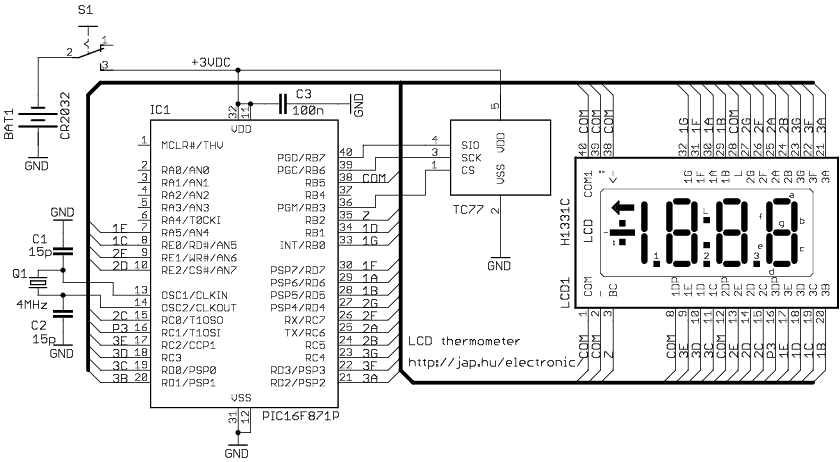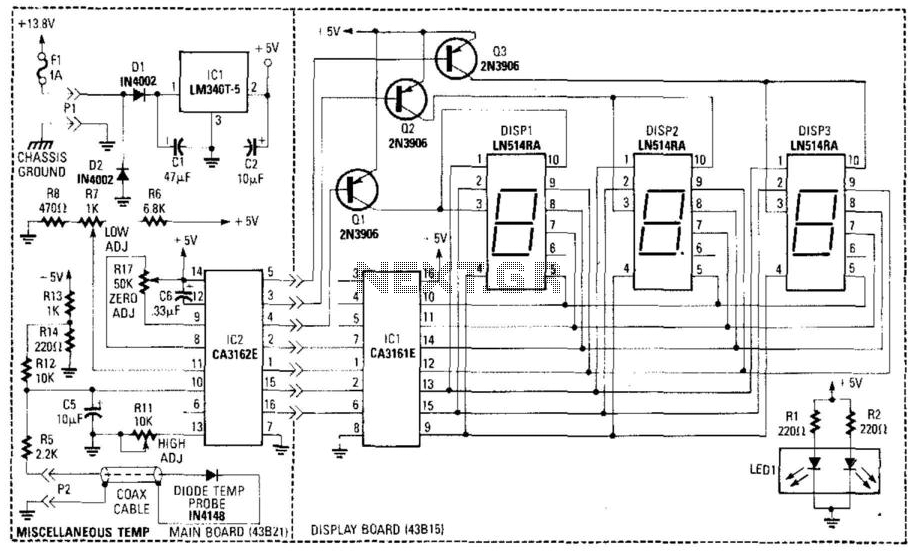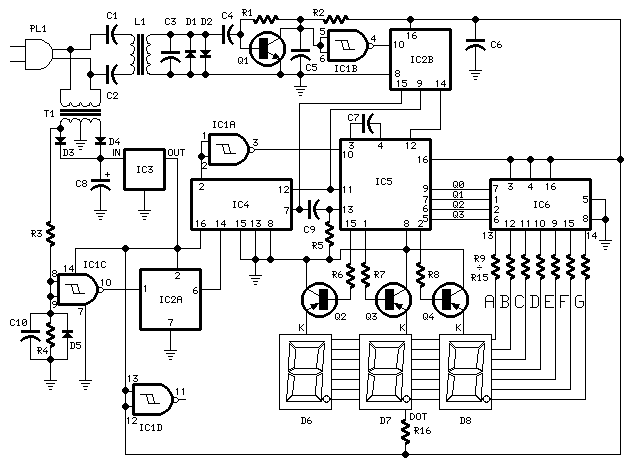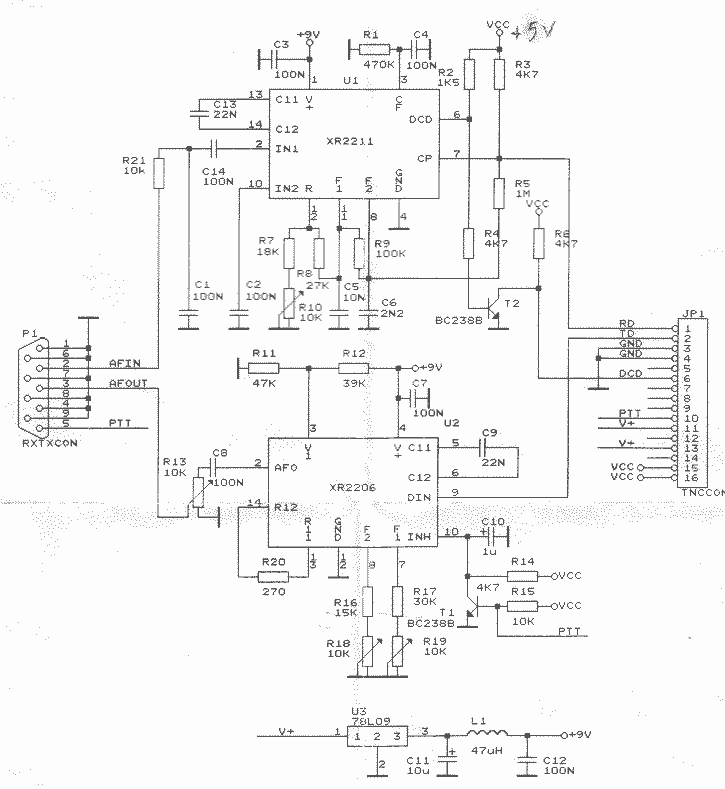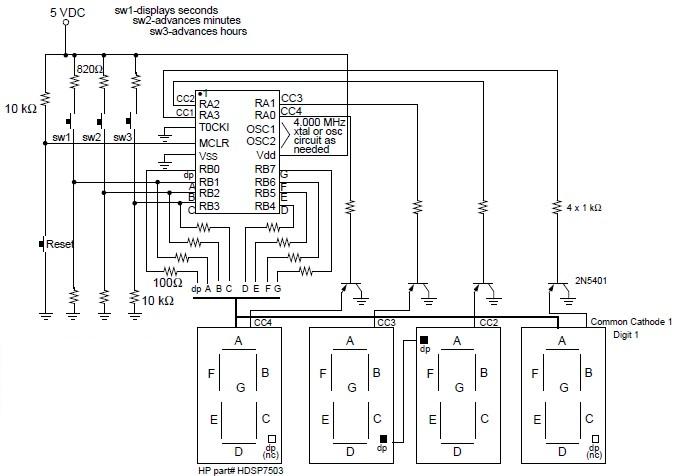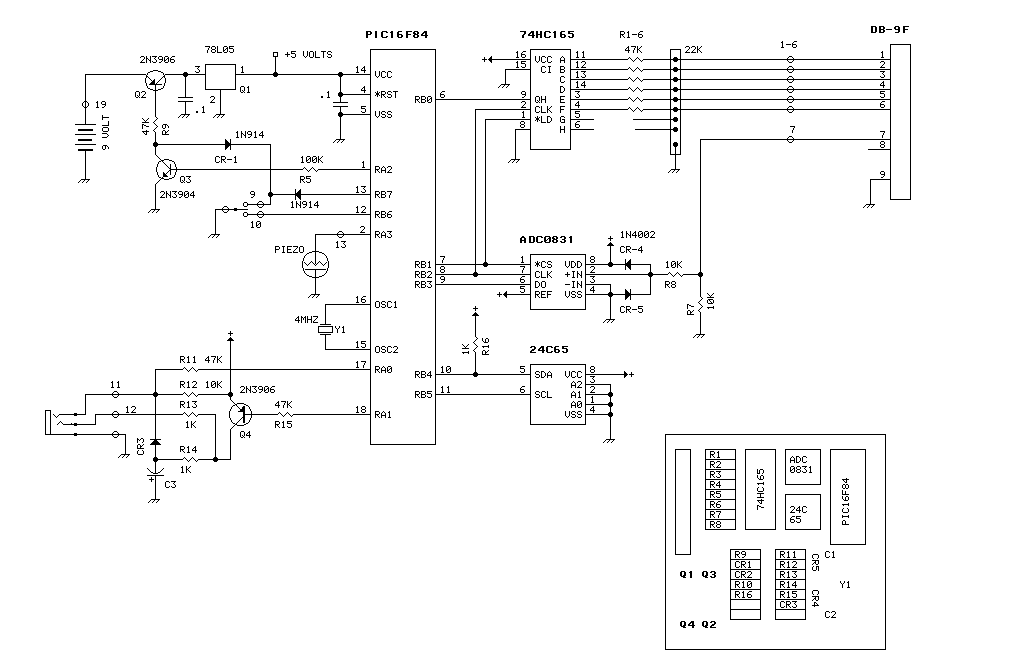
dac 08 as digital potentiometer
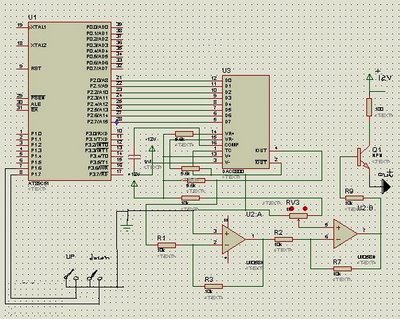
This digital volume control eliminates wear associated with traditional potentiometers and minimizes circuit noise. Volume adjustment is accomplished through UP and DOWN buttons. A digital potentiometer functions as a digitally-controlled electronic component that replicates the analog behavior of a potentiometer. Many industrial inverters or three-phase motor controllers utilize an input range of 0-1V, where an analog variable resistance alters the voltage, subsequently changing the motor speed controlled by that inverter. Over time, these potentiometers may degrade in performance, prompting the search for digital alternatives that can provide a 0-10V output using two push buttons. Digital potentiometers are commonly employed for trimming and scaling analog signals in microcontroller applications. They may be constructed using an R-2R integrated circuit or a digital-to-analog converter (DAC). Digital potentiometers are typically managed via digital protocols such as I²C and SPI, as well as simpler Up/Down protocols. Common applications include gain control in amplifiers (particularly instrumentation amplifiers), small-signal audio balancing, and offset adjustments. This project centers on a digital volume control or digital potentiometer. A microcontroller from the AT89S52 or any 8051 family can be utilized alongside the DAC08 or DAC-0800. The project concept is straightforward: two push buttons serve as inputs, one for incrementing and another for decrementing values between 0 and 255. This byte is then fed to the DAC-08, with the output current converted to a voltage range of 0-10V. The circuit is simple and versatile. The circuit diagram illustrates the interfacing of the DAC-08 with the microcontroller, along with various aspects of digital volume control, including the CS3310 Stereo Digital Volume Control, the advantages of digital over analog volume control, and innovative solutions like Wired Home's WH-DVIR100 digital volume control, which offers affordable distributed audio management with impedance protection for up to 16 channels. The digital volume control adjusts audio levels through mathematical manipulation of the music signal in the digital domain, which is then processed by a digital signal processor before being sent to the digital-to-analog converter. Digital volume control maintains overall system resolution, with Wadia products featuring 24-bit input capability, processing, and DAC resolution of 21 or 22 bits, depending on the model. A 16-bit signal from a CD can be attenuated without losing the original 16-bit information. This circuit can replace manual volume controls in stereo amplifiers. In this configuration, a push-to-on switch (S1) manages the forward (volume increase) operation for both channels, while another switch (S2) controls the reverse (volume decrease) operation for both channels.
Digital volume control systems have gained significant traction due to their ability to provide precise and noise-free audio adjustments. The integration of digital potentiometers into audio applications offers several advantages over traditional analog systems. Notably, digital potentiometers can be programmed for specific resistance values, allowing for repeatable and consistent volume settings. In addition, the use of microcontrollers in conjunction with DACs facilitates more complex audio processing algorithms, enabling features such as fade-in and fade-out effects, equalization, and dynamic range compression.
The circuit design typically involves a microcontroller interfacing with a digital potentiometer via standard communication protocols. The microcontroller's firmware is responsible for interpreting button presses and adjusting the digital potentiometer's settings accordingly. The output from the digital potentiometer is then converted to an analog voltage using a DAC, which can drive audio amplifiers directly. This setup allows for seamless integration into existing audio systems without the need for extensive modifications.
Furthermore, the design can incorporate feedback mechanisms to monitor audio levels and adjust the gain dynamically based on the input signal. This can enhance user experience by preventing sudden volume spikes and ensuring consistent audio output. With the growing demand for high-fidelity audio systems, digital volume control solutions represent a modern approach to audio management, providing both functionality and reliability in various applications.This digital volume control has no pot to wear out and introduces almost no noise in the circuit. Instead, the volume is controlled by pressing UP and DOWN. A digital potentiometer is a digitally-controlled electronic component that mimics the analog functions of a potentiometer. Many Inverter or 3-phase motor controller in industry have input 0-1 0V and an analog variable resistance is used to change the voltage which result in change in speed of the motor controlled by that Inverter. With the passage of time this potentiometer does not work fine. So, people try to find digital potentiometer which can give 0-10V digitally by the use of two push buttons.
It is often used for trimming and scaling analog signals by microcontrollers. It is either built using an R-2R integrated circuit or a Digital-to-analog converter. A digital potentiometer is an electronic component that is often controlled by digital protocols like I ²C and SPI, as well as more basic Up/Down protocols. Some typical uses of digital potentiometers are in circuits requiring gain control of amplifiers (frequently instrumentation amplifiers), small-signal audio-balancing, and offset adjustment.
This project is of digital volume control or digital potentiometer. Micro controller At89s52 0r any 8051 family microcontroller can be used with DAC08, or DAC-0800. The theme of project is very simple, two push button are used as input, one for increment and other for decrement of values between 0 to 255, this byte is then feed to digital to analog converter dac-08, the output current from DAC is converted to voltage between 0-10V accordingly. The circuit is simple and can be used any where. Circuit diagram for the interfacing of DAC-08 with micro-controller, Digital Volume control, CS3310 Stereo Digital Volume Control, merits of digital and analog volume control, high-end HiFi circles a level control done in the digital domain, Wired Home`s innovative WH-DVIR100 digital volume control makes distributed audio management affordable, while providing impedance protection for up to 16, digital volume control schematic, diy digital volume control photo, volume control circuit using pulse modulation, electronic volume control, digital volume control circuit diagram, volume control amp, stereo digital volume control, digital potentiometer project, Wadia Digital Volume Control, A digital volume control adjusts the volume by means of mathematical manipulation of the music signal while it is in the digital domain.
This manipulation can be performed by a digital signal processor. The volume-adjusted digital signal is then fed to the digital-to-analog converter. Digital Volume Control is overall system resolution. Wadia products have 24-bit input capability, 24-bit processing and DAC resolution of 21 or 22 bits, depending on model. a 16-bit signal from a CD can be attenuated without loss of the original 16-bit information. This circuit could be used for replacing your manual volume control in a stereo amplifier. In this circuit, push-to-on switch S1 controls the forward (volume increase) operation of both channels while a similar switch S2 controls reverse (volume decrease)operation of both channels.
digital potentiometer circuits digital pots rotary potentiometer digital potentiometer wiki austriamicrosystems` range of linear digital potentiometers provide the end equipment user with a cost effective and reliable replacement for mechanical Digital Potentiometers / Data Converters Binary and BCD A/D Converters, Comparators, Controller Area Network (CAN), D/A Converter, Delta - Sigma A/D Converters, Digital Potentiometers Data Converters. Digital Potentiometers (DCPs). Digital ICs. Digital Potentiometers Also known as: Digitally Controlled Potentiometer, DCP, RDAC, Semiconductors Digital Potentiometer ICs Buy Mouser Mouser Electronics Authorized Distributor.
Analog Potentiometer Console automation Like their electro-mechanica 🔗 External reference
Digital volume control systems have gained significant traction due to their ability to provide precise and noise-free audio adjustments. The integration of digital potentiometers into audio applications offers several advantages over traditional analog systems. Notably, digital potentiometers can be programmed for specific resistance values, allowing for repeatable and consistent volume settings. In addition, the use of microcontrollers in conjunction with DACs facilitates more complex audio processing algorithms, enabling features such as fade-in and fade-out effects, equalization, and dynamic range compression.
The circuit design typically involves a microcontroller interfacing with a digital potentiometer via standard communication protocols. The microcontroller's firmware is responsible for interpreting button presses and adjusting the digital potentiometer's settings accordingly. The output from the digital potentiometer is then converted to an analog voltage using a DAC, which can drive audio amplifiers directly. This setup allows for seamless integration into existing audio systems without the need for extensive modifications.
Furthermore, the design can incorporate feedback mechanisms to monitor audio levels and adjust the gain dynamically based on the input signal. This can enhance user experience by preventing sudden volume spikes and ensuring consistent audio output. With the growing demand for high-fidelity audio systems, digital volume control solutions represent a modern approach to audio management, providing both functionality and reliability in various applications.This digital volume control has no pot to wear out and introduces almost no noise in the circuit. Instead, the volume is controlled by pressing UP and DOWN. A digital potentiometer is a digitally-controlled electronic component that mimics the analog functions of a potentiometer. Many Inverter or 3-phase motor controller in industry have input 0-1 0V and an analog variable resistance is used to change the voltage which result in change in speed of the motor controlled by that Inverter. With the passage of time this potentiometer does not work fine. So, people try to find digital potentiometer which can give 0-10V digitally by the use of two push buttons.
It is often used for trimming and scaling analog signals by microcontrollers. It is either built using an R-2R integrated circuit or a Digital-to-analog converter. A digital potentiometer is an electronic component that is often controlled by digital protocols like I ²C and SPI, as well as more basic Up/Down protocols. Some typical uses of digital potentiometers are in circuits requiring gain control of amplifiers (frequently instrumentation amplifiers), small-signal audio-balancing, and offset adjustment.
This project is of digital volume control or digital potentiometer. Micro controller At89s52 0r any 8051 family microcontroller can be used with DAC08, or DAC-0800. The theme of project is very simple, two push button are used as input, one for increment and other for decrement of values between 0 to 255, this byte is then feed to digital to analog converter dac-08, the output current from DAC is converted to voltage between 0-10V accordingly. The circuit is simple and can be used any where. Circuit diagram for the interfacing of DAC-08 with micro-controller, Digital Volume control, CS3310 Stereo Digital Volume Control, merits of digital and analog volume control, high-end HiFi circles a level control done in the digital domain, Wired Home`s innovative WH-DVIR100 digital volume control makes distributed audio management affordable, while providing impedance protection for up to 16, digital volume control schematic, diy digital volume control photo, volume control circuit using pulse modulation, electronic volume control, digital volume control circuit diagram, volume control amp, stereo digital volume control, digital potentiometer project, Wadia Digital Volume Control, A digital volume control adjusts the volume by means of mathematical manipulation of the music signal while it is in the digital domain.
This manipulation can be performed by a digital signal processor. The volume-adjusted digital signal is then fed to the digital-to-analog converter. Digital Volume Control is overall system resolution. Wadia products have 24-bit input capability, 24-bit processing and DAC resolution of 21 or 22 bits, depending on model. a 16-bit signal from a CD can be attenuated without loss of the original 16-bit information. This circuit could be used for replacing your manual volume control in a stereo amplifier. In this circuit, push-to-on switch S1 controls the forward (volume increase) operation of both channels while a similar switch S2 controls reverse (volume decrease)operation of both channels.
digital potentiometer circuits digital pots rotary potentiometer digital potentiometer wiki austriamicrosystems` range of linear digital potentiometers provide the end equipment user with a cost effective and reliable replacement for mechanical Digital Potentiometers / Data Converters Binary and BCD A/D Converters, Comparators, Controller Area Network (CAN), D/A Converter, Delta - Sigma A/D Converters, Digital Potentiometers Data Converters. Digital Potentiometers (DCPs). Digital ICs. Digital Potentiometers Also known as: Digitally Controlled Potentiometer, DCP, RDAC, Semiconductors Digital Potentiometer ICs Buy Mouser Mouser Electronics Authorized Distributor.
Analog Potentiometer Console automation Like their electro-mechanica 🔗 External reference
